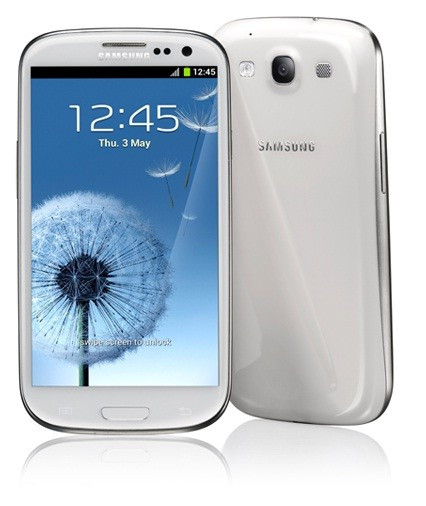Samsung Galaxy S3 vs HTC Evo 3D: Which Android Smartphone Would You Buy?

The HTC Evo 4G was released in April and promised to be a very powerful smartphone. In fact, before its release the Evo 3D made enough noise with its 3D capable display and stereoscopic cameras to capture a dedicated audience. The 3D technology still seems a luxury for many of us, while it should appeal to tech-enthusiasts and put their creative skills test. The stereoscopic 3D gives a cool blurry effect with an illusion of depth that can of course be turned off for normal snapshots. The stereoscopic cameras offer dual LED flash for taking sharper images in fading light.
On the other hand, the Galaxy S3 is by far the most desirable smartphone of the year, thanks to revolutionary features like Smart Stay, Direct Call, S Voice and Wi-Fi Direct. It broke a few records with pre-order sales crossing 9 million. The smartphone has already dominated the market with pole position both in terms of sales and popularity, while it boasts more than 40 percent of Android-based smartphone sales. The Korean smartphone giant is on its way to becoming the ruler of Android smartphones in the first quarter of 2012. The device is poised to hit 290 carriers across 145 countries, while the company is expected to churn out nearly five million smartphones a month.
With so much hype and buzz surrounding the release of Samsung's smartphone of the year, let's check out how the two smartphones fare in this feature comparison:
Display
The Galaxy S3 sports a 4.8in Super AMOLED display with a capacitive touchscreen running at 720p (720x1280 pixels) resolution and a pixel density of 306 pixels per inch (ppi).
In contrast, the HTC Evo 3D comes with a 4.3in 3D LCD display with a capacitive touchscreen, supporting a resolution of 540 x 960 pixels at a pixel density of 256ppi.
Dimensions and Weight
The S3 measures 136.6x70.6x8.6mm and weighs 133g. The Evo 3D, on the other hand, measures 126x65x12.1mm and is heavier at 170g. Given the dimensions and weight of the two smartphones, the Evo 3D is definitely a bit bulkier than the super-slim S3.
Processor
The S3 has a powerful quad-core 1.4 GHz Cortex-A9 processor based on the Exynos 4 quad chipset and a Mali-400MP GPU for graphics tasks, which is suitable for high-performance computing like gaming and multi-tasking.
The Evo 3D houses a dual-core 1.2GHz processor coupled with Adreno 220 GPU. The processor is based on the Qualcomm MSM8660 chipset with well-balanced power-saving features.
Memory and Storage
Both the Galaxy S3 and Evo 3D ship with 1GB of RAM and offer support for microSD expansion slots. The former supports three versions of internal storage models 16/32/64 GB, while the latter supports only 1GB of internal storage. The S3 offers microSD expansion support up to 64GB, while Evo 3D supports only up to 32GB microSD.
Operating System
Evo 3D comes pre-installed with Android 2.3 (Gingerbread) onboard, which is upgradeable to Android 4.0 (Ice Cream Sandwich). In comparison, the Galaxy S3 ships with latest version of Ice Cream Sandwich (Android 4.0.4) factory-installed.
Camera
The Galaxy S3 flaunts a powerful eight megapixel rear camera with 1080p video recording capability at 30fps (frames per second). It also features a decent 1.9 megapixel front-facing camera for video calls and supports 720p video recording at 30fps. The S3 camera also supports special functions such as auto-focus, dual LED flash, simultaneous HD video and image recording, geo-tagging, touch focus and face and smile detection, as well as image stabilisation.
In contrast, the Evo 3D sports a five megapixel rear camera with auto-focus and LED flash. The rear camera supports 720p video recording capability at 30fps (both 2D and 3D modes). It also houses a 1.3 megapixel front-facing camera for video calls. The advanced camera functions include stereoscopic photos (at 2 megapixel only) and videos, geo-tagging.
Connectivity
The Galaxy S3 offers Wi-Fi 802.11 a/b/g/n, DLNA, Wi-Fi Direct, Wi-Fi hotspot, Bluetooth v4.0 with A2DP, EDR and NFC (Near Field Communication). Its 4G connectivity speeds are HSDPA, 21Mbps and HSUPA, 5.76Mbps.
The Evo 3D comes with similar connectivity options like Wi-Fi 802.11 a/b/g/n, DLNA, Wi-Fi Direct, Wi-Fi hotspot, Bluetooth v4.0 with A2DP, EDR. The only exceptions are the lack of NFC and 4G connectivity options. Its 3G connectivity speeds are HSDPA, 14.4Mbps and HSUPA, 5.76Mbps.
Battery
The Galaxy S3 is powered by a massive 2100mAh Li-Ion battery that is rated to deliver up to 590 hours of standby time on 2G and up to 790 hours on 3G. The battery also delivers an impressive talk time of approximately 22 hours on 2G and 12 hours on 3G.
The Evo 3D, in comparison, features a less powerful Li-Ion 1730 mAh battery providing up to 358 hours of standby time on 2G and up to 420 hours on 3G. The battery is rated to deliver up to 9 hours and 20 minutes of talk time on 2G and up to 7 hours and 45 minutes on 3G.
MUST READ: Galaxy S3's Android 4.0.4 ROM Leaked, S Voice and Other Goodies Up for Grabs
MUST READ: Will Your HTC Smartphone Get Ice Cream Sandwich? [FULL LIST & TIME-TABLE]
© Copyright IBTimes 2025. All rights reserved.





















